Abstract
The use of polyethylene glycol 4000 as a non-absorbable, continuously fed faecal marker is described. The intestinal handling and transit of polyethylene glycol is compared with that of chromium sesquioxide and barium sulphate. Polyethylene glycol is an acceptable non-absorbable faecal marker for calcium, phosphorus, and fatty acids, and has several features which commend its use in preference to insoluble chromium sesquioxide and barium sulphate particularly when marking water-soluble dietary constituents.
Full text
PDF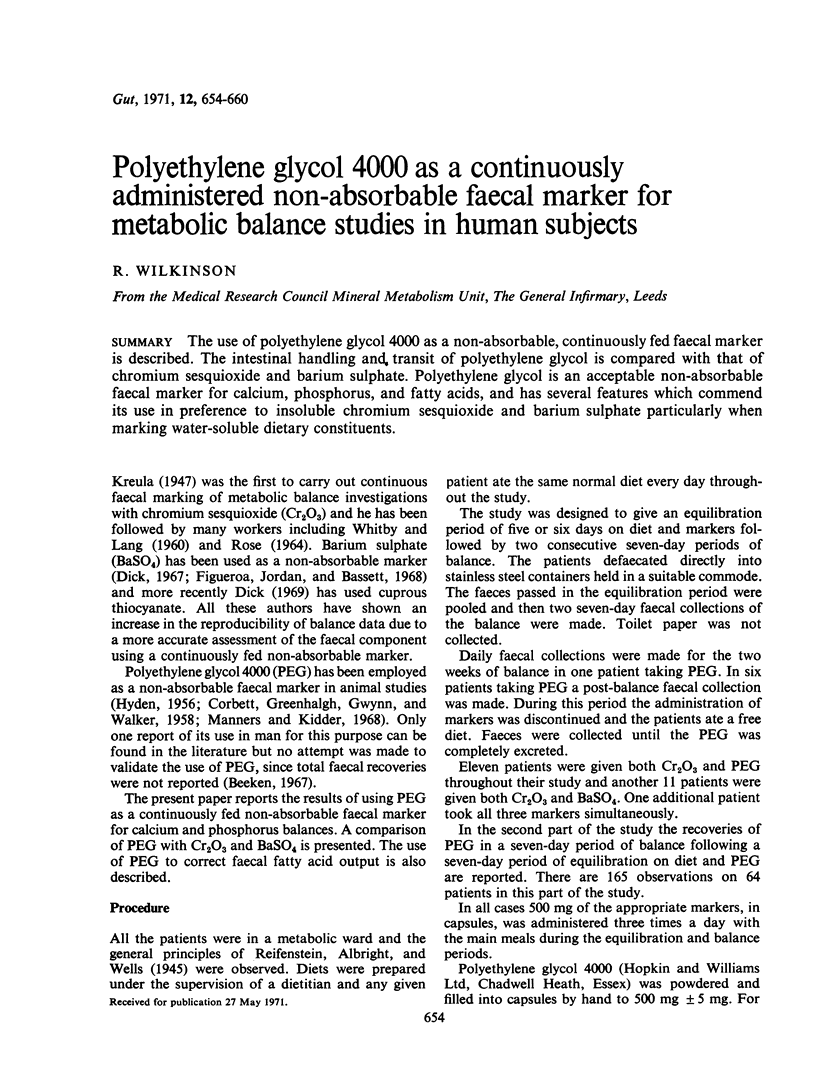
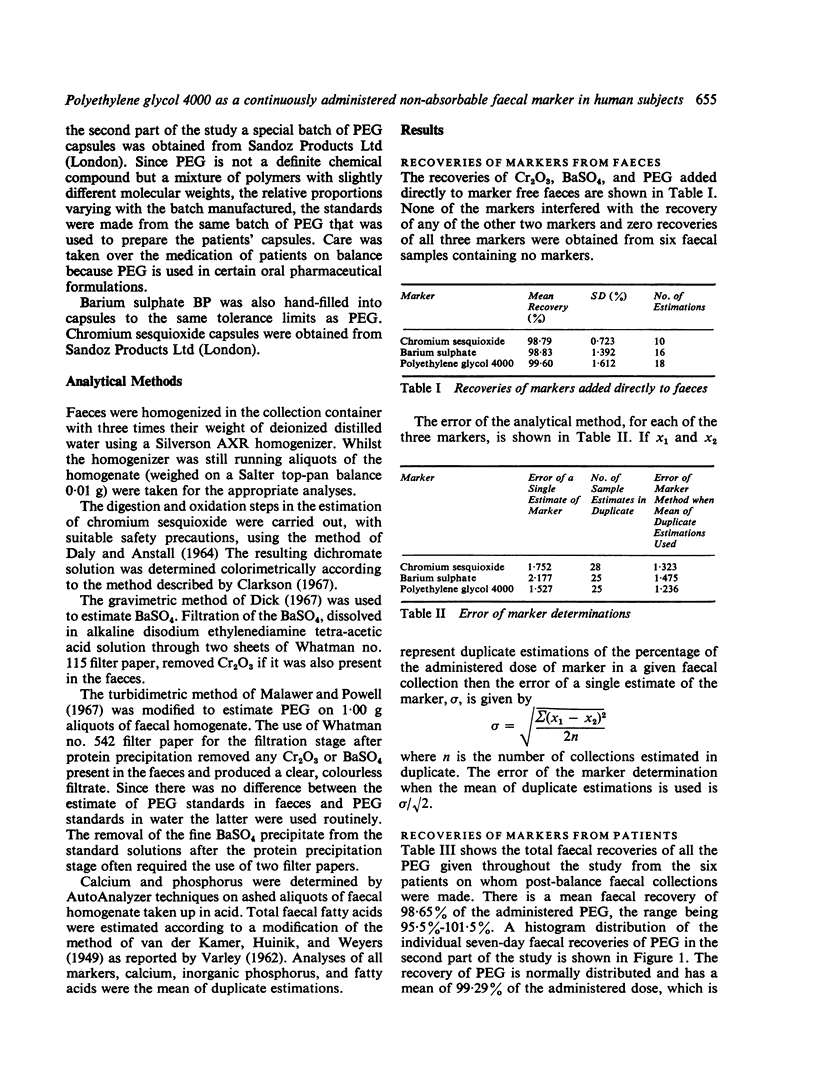
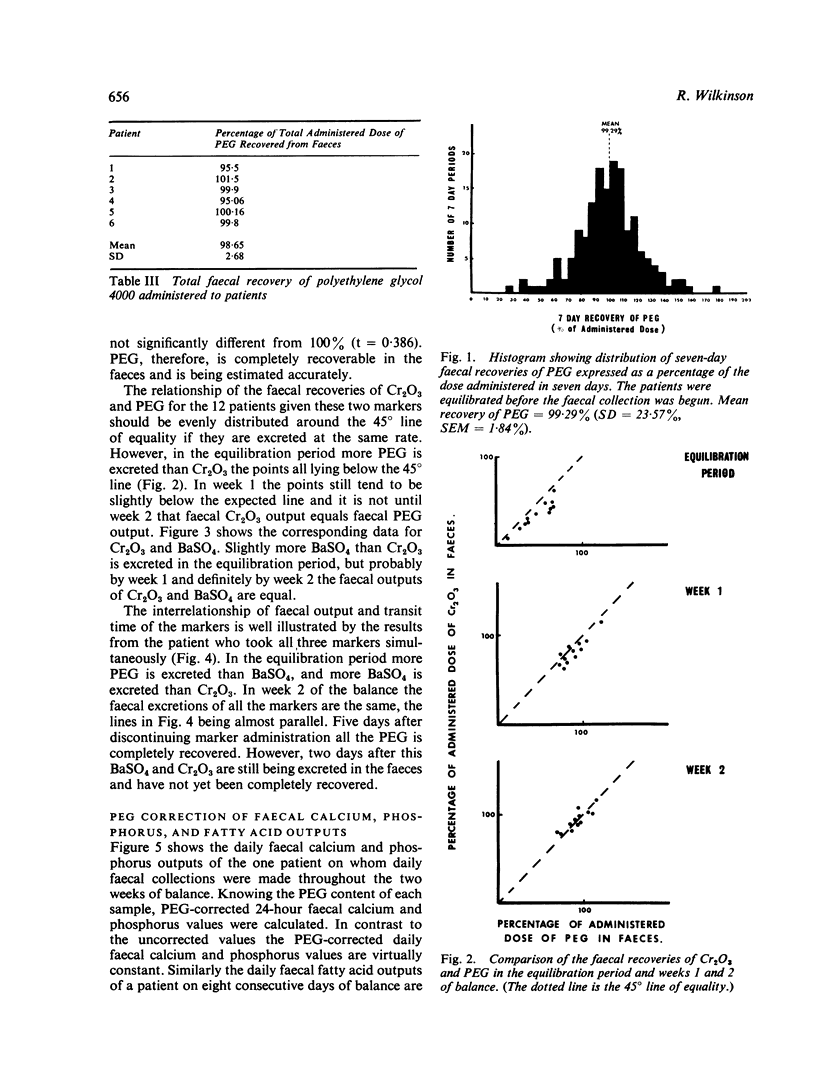
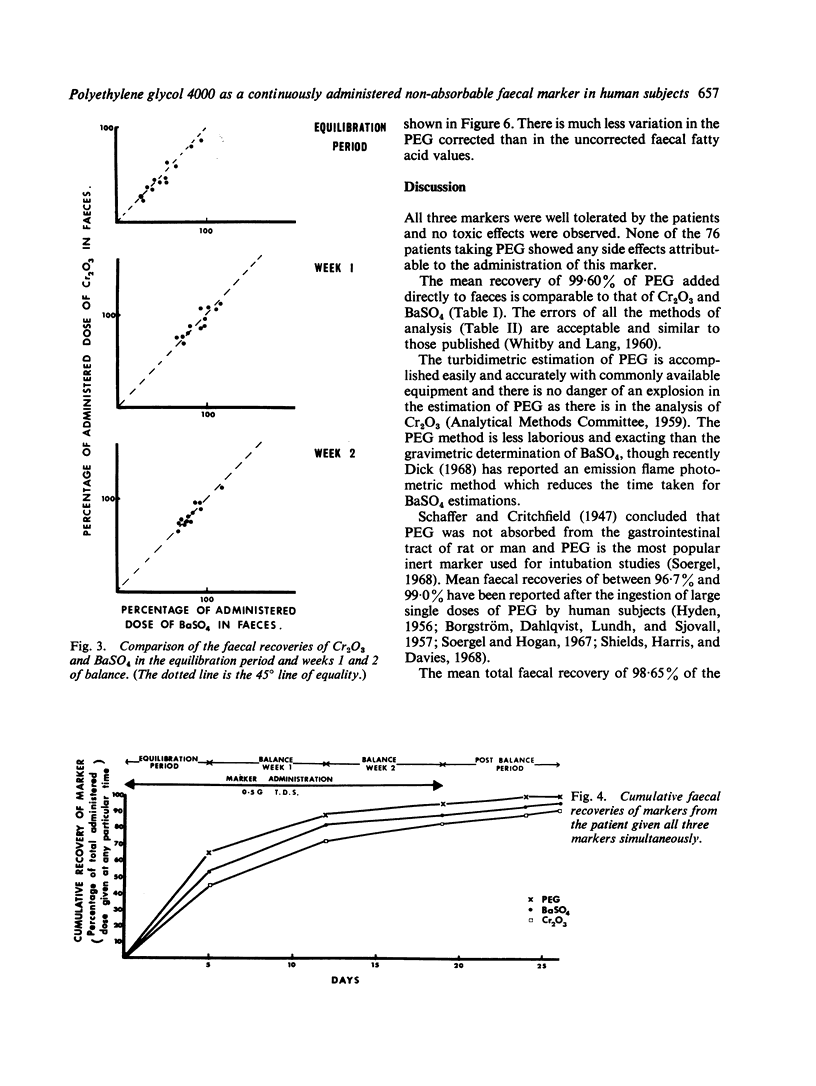
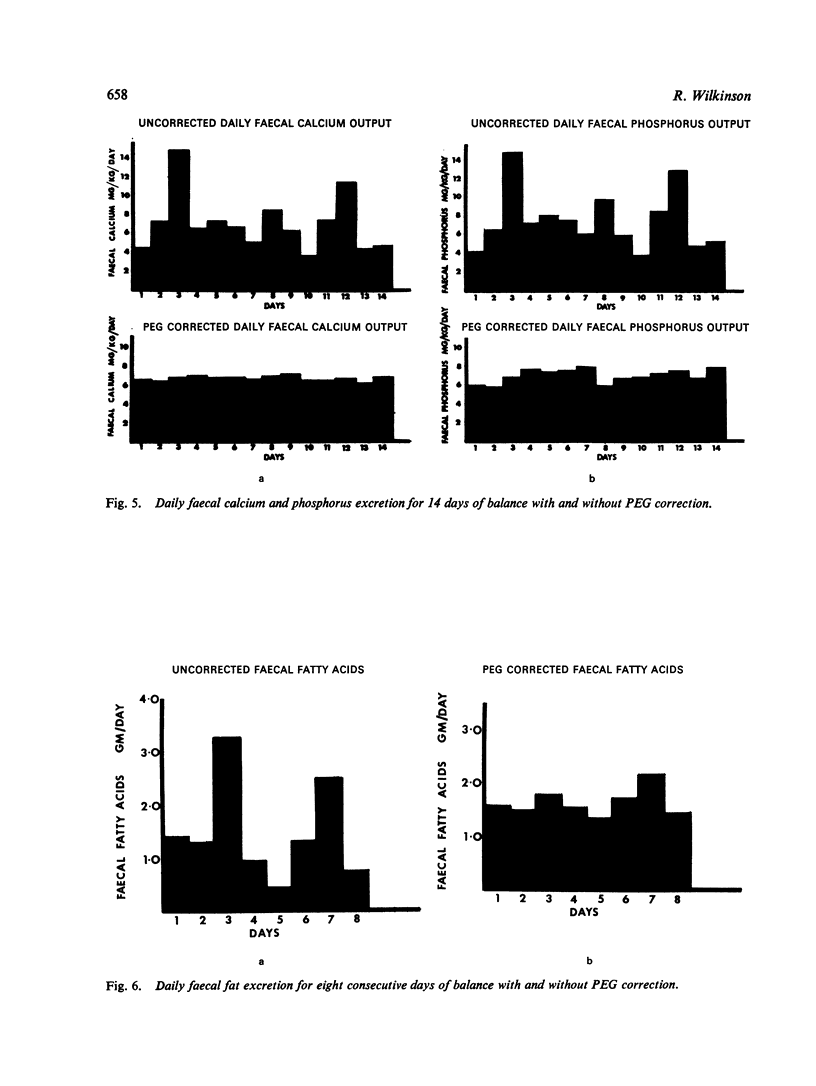
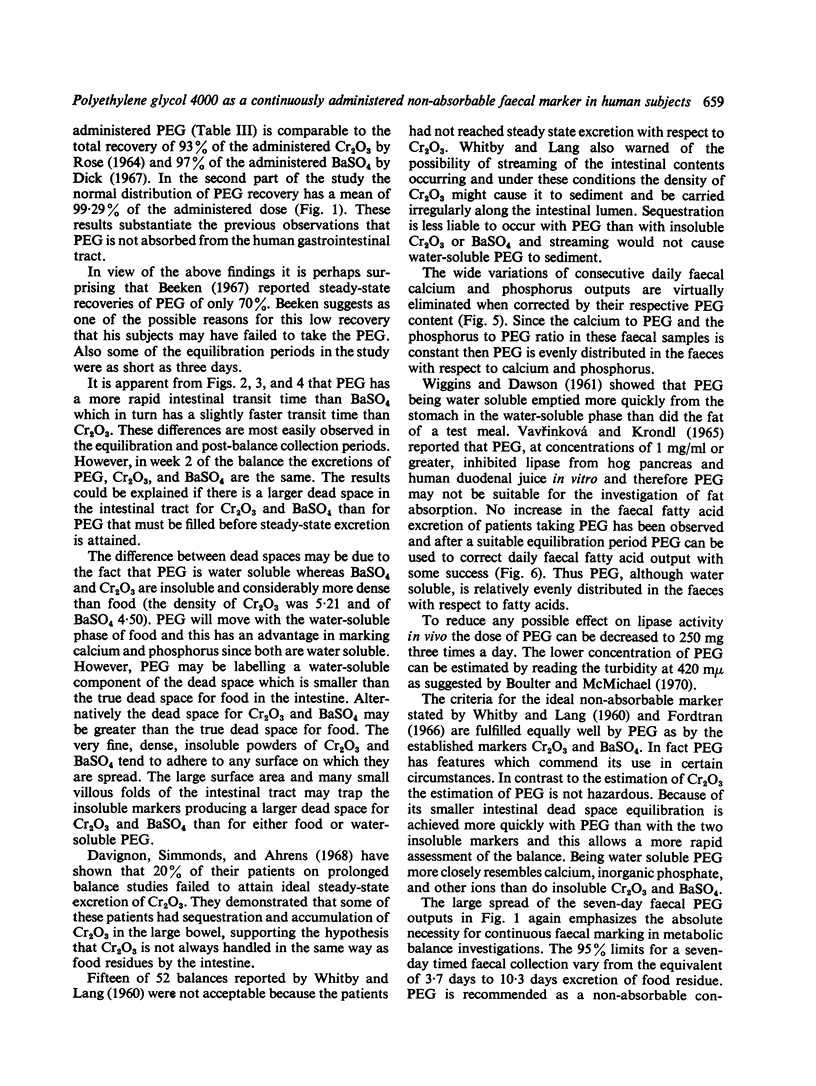
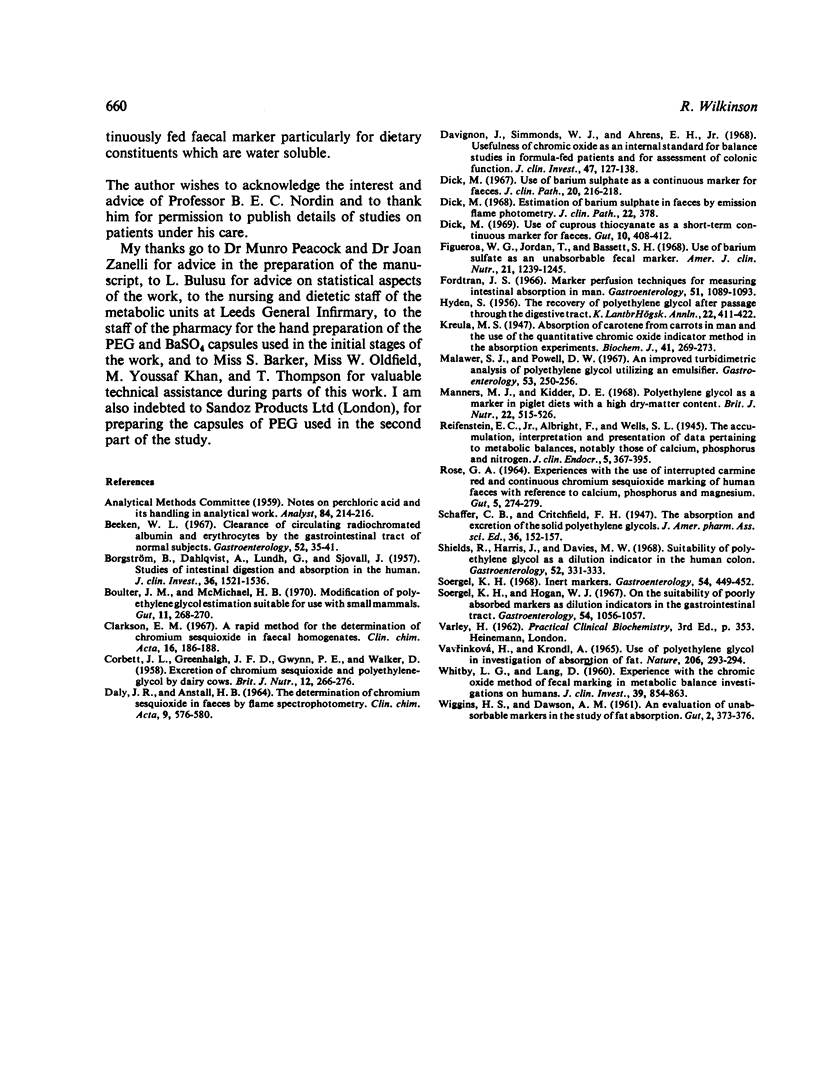
Selected References
These references are in PubMed. This may not be the complete list of references from this article.
- BORGSTROM B., DAHLQVIST A., LUNDH G., SJOVALL J. Studies of intestinal digestion and absorption in the human. J Clin Invest. 1957 Oct;36(10):1521–1536. doi: 10.1172/JCI103549. [DOI] [PMC free article] [PubMed] [Google Scholar]
- Boulter J. M., McMichael H. B. Modification of polyethylene glycol estimation suitable for use with small mammals. Gut. 1970 Mar;11(3):268–270. doi: 10.1136/gut.11.3.268. [DOI] [PMC free article] [PubMed] [Google Scholar]
- CORBETT J. L., GREENHALGH J. F., GWYNN P. E., WALKER D. Excretion of chromium sesquioxide and polyethyleneglycol by dairy cows. Br J Nutr. 1958;12(3):266–276. doi: 10.1079/bjn19580038. [DOI] [PubMed] [Google Scholar]
- Clarkson E. M. A rapid method for the determination of chromium sesquioxide in faecal homogenates. Clin Chim Acta. 1967 Apr;16(1):186–188. doi: 10.1016/0009-8981(67)90292-6. [DOI] [PubMed] [Google Scholar]
- DALY J. R., ANSTALL H. B. THE DETERMINATION OF CHROMIUM SESQUIOXIDE IN FAECES BY FLAME SPECTROPHOTOMETRY. Clin Chim Acta. 1964 Jun;9:576–580. doi: 10.1016/0009-8981(64)90124-x. [DOI] [PubMed] [Google Scholar]
- Davignon J., Simmonds W. J., Ahrens E. H. Usefulness of chromic oxide as an internal standard for balance studies in formula-fed patients and for assessment of colonic function. J Clin Invest. 1968 Jan;47(1):127–138. doi: 10.1172/JCI105703. [DOI] [PMC free article] [PubMed] [Google Scholar]
- Dick M. Estimation of barium sulphate in faeces by emission flame photometry. J Clin Pathol. 1969 May;22(3):378–378. doi: 10.1136/jcp.22.3.378. [DOI] [PMC free article] [PubMed] [Google Scholar]
- Dick M. Use of barium sulphate as a continuous marker for faeces. J Clin Pathol. 1967 Mar;20(2):216–218. doi: 10.1136/jcp.20.2.216. [DOI] [PMC free article] [PubMed] [Google Scholar]
- Dick M. Use of cuprous thiocyanate as a short-term continuous marker for faeces. Gut. 1969 May;10(5):408–412. doi: 10.1136/gut.10.5.408. [DOI] [PMC free article] [PubMed] [Google Scholar]
- Figueroa W. G., Jordan T., Bassett S. H. Use of barium sulfate as an unabsorbable fecal marker. Am J Clin Nutr. 1968 Nov;21(11):1239–1245. doi: 10.1093/ajcn/21.11.1239. [DOI] [PubMed] [Google Scholar]
- Fordtran J. S. Marker perfusion techniques for measuring intestinal absorption in man. Gastroenterology. 1966 Dec;51(6):1089–1093. [PubMed] [Google Scholar]
- Kreula M. S. Absorption of carotene from carrots in man and the use of the quantitative chromic oxide indicator method in the absorption experiments. Biochem J. 1947;41(2):269–273. doi: 10.1042/bj0410269. [DOI] [PMC free article] [PubMed] [Google Scholar]
- ROSE G. A. EXPERIENCES WITH THE USE OF INTERRUPTED CARMINE RED AND CONTINUOUS CHROMIUM SESQUIOXIDE MARKING OF HUMAN FAECES WITH REFERENCE TO CALCIUM, PHOSPHORUS, AND MAGNESIUM. Gut. 1964 Jun;5:274–279. doi: 10.1136/gut.5.3.274. [DOI] [PMC free article] [PubMed] [Google Scholar]
- Shields R., Harris J., Davies M. W. Suitability of polyethylene glycol as a dilution indicator in the human colon. Gastroenterology. 1968 Mar;54(3):331–333. [PubMed] [Google Scholar]
- Soergel K. H., Hogan W. J. On the suitability of poorly absorbed markers as dilution indicators in the gastrointestinal tract. Gastroenterology. 1967 Jun;52(6):1056–1057. [PubMed] [Google Scholar]
- Soergel K. H. Inert markers. Gastroenterology. 1968 Mar;54(3):449–452. [PubMed] [Google Scholar]
- Vavrinková H., Krondl A. Use of polyethylene glycol in investigations of absorption of fat. Nature. 1965 Oct 16;208(5007):293–294. doi: 10.1038/208293a0. [DOI] [PubMed] [Google Scholar]
- WHITBY L. G., LANG D. Experience with the chromic oxide method of fecal marking in metabolic balance investigations on humans. J Clin Invest. 1960 Jun;39:854–863. doi: 10.1172/JCI104106. [DOI] [PMC free article] [PubMed] [Google Scholar]
- WIGGINS H. S., DAWSON A. M. An evaluation of unabsorbable markers in the study of fat absorption. Gut. 1961 Dec;2:373–376. doi: 10.1136/gut.2.4.373. [DOI] [PMC free article] [PubMed] [Google Scholar]


